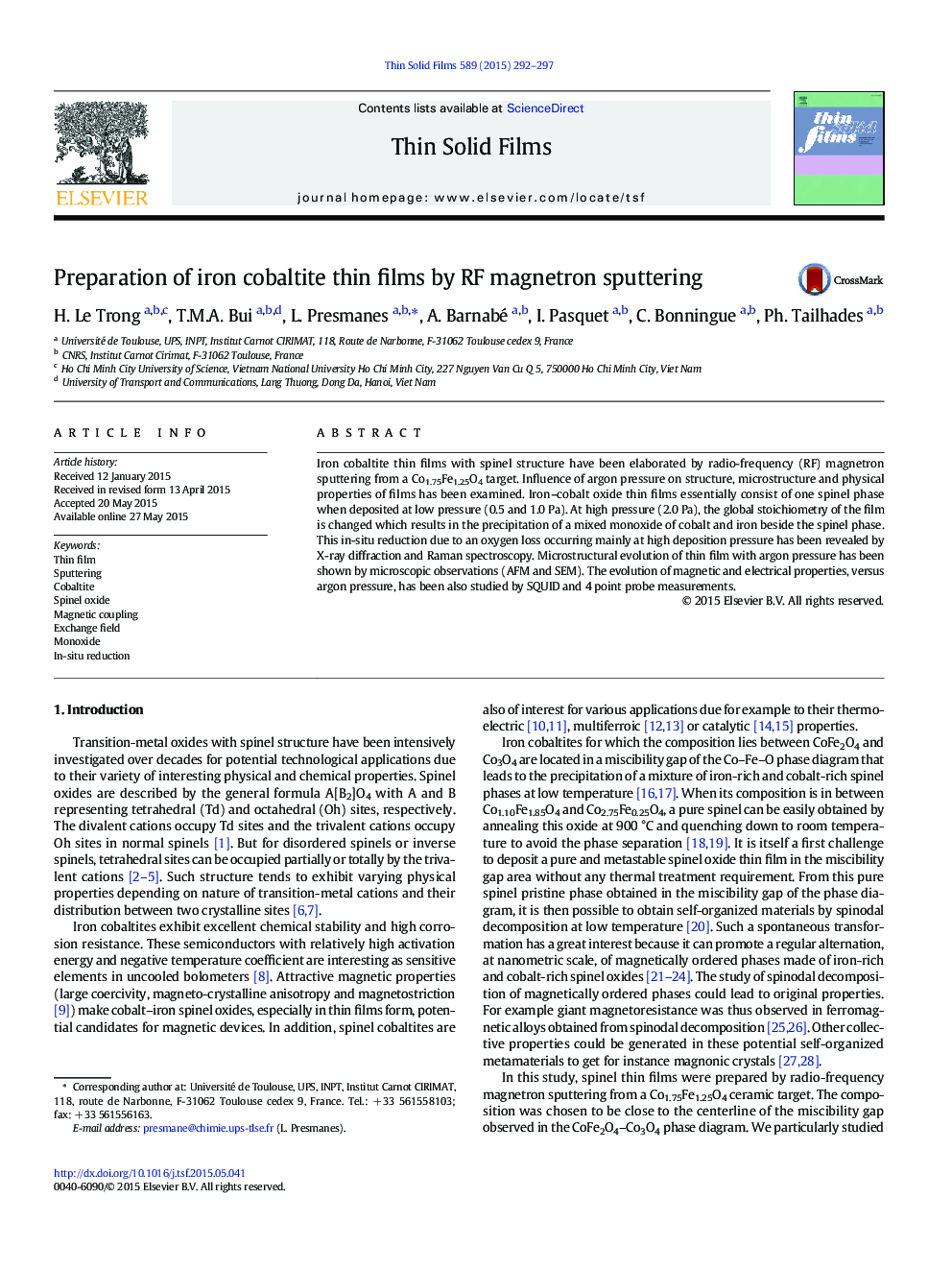| Article ID | Journal | Published Year | Pages | File Type |
|---|---|---|---|---|
| 1664612 | Thin Solid Films | 2015 | 6 Pages |
•Co1.75Fe1.25O4 phase is obtained at room temperature without any annealing.•This phase is a ferrimagnetic semiconductor with a coercive field of 32 kOe at 5 K.•Oxygen content of the thin film is related to the argon pressure during sputtering.•Monoxide phase grows into the film at high argon pressure.•Magnetic coupling effect reveals nanoscale impurities at low argon pressure.
Iron cobaltite thin films with spinel structure have been elaborated by radio-frequency (RF) magnetron sputtering from a Co1.75Fe1.25O4 target. Influence of argon pressure on structure, microstructure and physical properties of films has been examined. Iron–cobalt oxide thin films essentially consist of one spinel phase when deposited at low pressure (0.5 and 1.0 Pa). At high pressure (2.0 Pa), the global stoichiometry of the film is changed which results in the precipitation of a mixed monoxide of cobalt and iron beside the spinel phase. This in-situ reduction due to an oxygen loss occurring mainly at high deposition pressure has been revealed by X-ray diffraction and Raman spectroscopy. Microstructural evolution of thin film with argon pressure has been shown by microscopic observations (AFM and SEM). The evolution of magnetic and electrical properties, versus argon pressure, has been also studied by SQUID and 4 point probe measurements.
